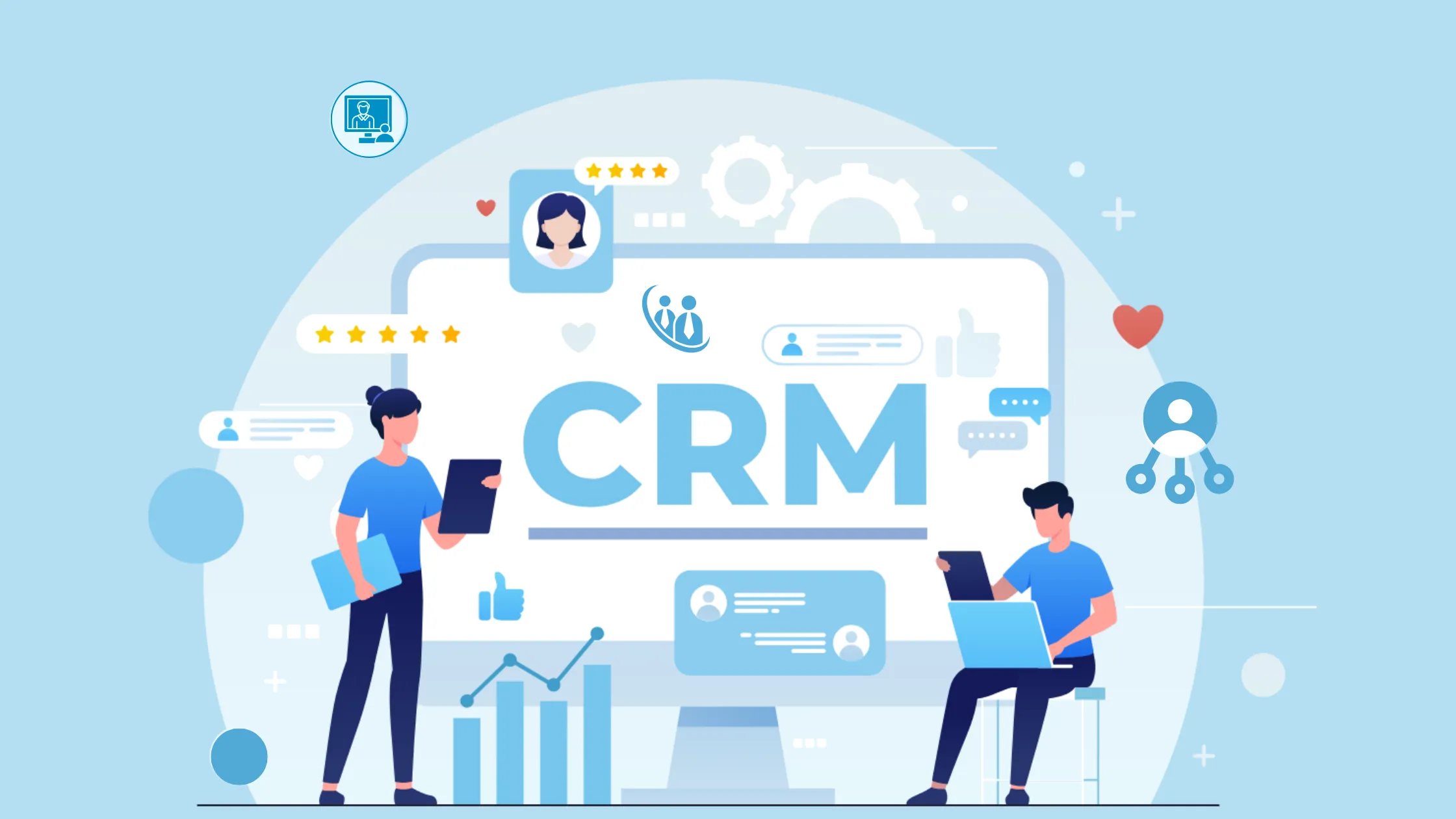Recruiting CRM (Candidate Relationship Management) analytics are changing how companies hire people. In the past, recruiters used their gut feelings or basic metrics like time-to-hire. But now, in a fast and competitive job market, staying ahead requires making decisions based on data—not just assumptions.
With Recruiting CRM analytics, recruiters can use tools that go beyond just tracking job applications. These systems give instant information on how candidates interact, make work processes smoother, and even forecast future hiring needs. Whether finding the most effective ways to attract candidates or spotting bottlenecks in your hiring process, CRM analytics helps you improve every part of the process.
This blog explains how Recruiting CRM analytics can improve your hiring process in ways that traditional methods can't. These tools help you work more efficiently, build better connections with candidates, make smarter decisions, and keep your recruitment strategy up-to-date. Let's see how CRM analytics can elevate your hiring game.
Understanding Recruiting CRM Analytics
Recruiting CRM systems are more than just tools; they are the foundation of a modern recruitment strategy. These systems help recruiters build and maintain relationships, automate tasks, and get instant updates on how well their hiring efforts are working. Recruiting CRM analytics keeps recruiters well-informed and ready to act with features to track how candidates interact, manage communication points, and predict future hiring needs.
According to Business Research Insights, the market for Recruitment CRMs is expected to grow from around USD 2.16 billion in 2023 to USD 4.29 billion by 2032, with an average yearly growth rate (CAGR) of about 7.9%. This strong growth shows that more companies are using Recruiting CRM tools to improve their hiring processes. As businesses continue to use Recruitment CRM systems for their data-based insights, these tools are likely to become even more important in shaping how companies plan their hiring strategies in the future.
Recruiting CRM analytics digs deeper, unlike traditional recruitment metrics, which often focus on basic indicators like time-to-hire or cost-per-hire. It gives valuable information about how candidates engage with your company, where the hiring process slows down, and which methods bring in the best candidates. Think of it as not just seeing how well your hiring is going but also predicting changes in the job market and what kind of talent you'll need.
The evolution of data-driven recruitment has been remarkable:
-
What began as basic spreadsheets has evolved into sophisticated systems driven by artificial intelligence (AI) and machine learning (ML).
-
Modern recruiting CRMs allow companies to use large amounts of data effectively.
-
These systems constantly improve processes and results, making hiring more accurate, efficient, and better aligned with the organisation's overall goals.
Measuring Recruitment Effectiveness Through CRM
Success in recruitment is no longer just filling positions—it's about filling them with the right candidates in the most efficient way possible. Recruiting CRM analytics helps achieve this by focusing on the right metrics. Key performance indicators (KPIs) like candidate engagement rates, pipeline conversion rates, and source effectiveness provide a clear picture of what's working and needs improvement. These recruiting metrics ensure that recruiters can optimise their strategies and focus on what truly matters.
Key Metrics to Track
Candidate Engagement Rates: Check how well your team connects with candidates.
Pipeline Conversion Rates: See how well candidates are moved through each step.
Source Effectiveness: Find out which channels work best for finding great candidates.
Time-to-Engagement: Track how quickly candidates respond to your messages.
Quality of Hire: Evaluate the performance and retention of placed candidates.
Candidate Experience Score: Use surveys to gather feedback on the recruitment process.
For instance, monitoring how often candidates interact with your messages can show how well your team is building a connection with them. Are your communication strategies creating trust and keeping them interested, or are they not working? In the same way, looking at how many candidates move through each step of the hiring process can show how effective it is. If many candidates leave at the same point, something needs to be improved.
Numbers alone don't give the whole picture. Creating custom analytics dashboards is key to turning raw data into useful information. With these dashboards, recruiters can:
-
Focus on the most important metrics for their goals.
-
Track performance in real-time, all in one place.
-
Analyse trends and make decisions based on data.
Add smart data visualisation tools like interactive charts and detailed reports, and you'll have everything you need to make decisions that support your business goals.
Modern Approach to Recruiting CRM Analytics
Recruitment CRM analytics tools have improved to meet the different needs of hiring teams. These tools offer useful information at each step of the hiring process, helping teams make data-based decisions.
Tailored Insights for Every Stage
Today's analytics tools are designed to give you useful information at every step of the hiring process. From finding candidates to helping them settle into their new roles, these insights can help you make smarter decisions. For example:
Sourcing Analytics: Identify which job boards and channels yield the highest-quality candidates.
Pipeline Analytics: Track candidates' progression through the hiring process and pinpoint bottlenecks.
Onboarding Metrics: Measure time-to-productivity for new hires, ensuring a seamless transition from candidate to employee.
Real-Time Reporting
With real-time reporting capabilities, recruiters can always access the latest information. Dashboards refresh immediately, giving the most up-to-date picture of hiring activities. Whether you're getting ready for a team discussion or analysing trends, these tools deliver the necessary data when needed.
Benefits of Predictive Analytics
-
Predictive analytics is transforming the way companies hire. Smart AI tools can:
-
Predict future job openings by looking at past hiring trends.
-
Spot candidates who are a great fit for certain positions.
-
Estimate how long it will take to fill roles to meet company goals.
Seamless Customisation
Adaptability is crucial, and today's recruiting CRMs let users tailor their dashboards and reports. It helps teams concentrate on the most critical metrics and generate reports that make sense to decision-makers.
Leveraging Recruiting CRM Data for Strategic Decision-Making
Imagine having a crystal ball that shows you the future of your hiring needs. While CRM analytics isn't magic, predictive analytics is almost as good. By looking at past data, CRM systems can help you:
-
Predict when you might run short on talent.
-
Estimate how many people you'll need to hire.
-
Solve problems before they even happen.
Why Predictive Analytics is Helpful
Preparedness: Build talent pools in advance of demand.
Process Optimisation: Allocate resources to streamline slower stages.
Enhanced Candidate Experience: Address drop-offs and create a seamless hiring journey.
Another big advantage is Using Recruiting CRM analytics to improve the candidate pipeline. Data helps identify bottlenecks, prioritise high-potential candidates, and enhance the candidate experience. For example, if your data shows fewer candidates moving forward after interviews, you can look into the problem and fix it to get better results. Candidates who feel involved and appreciated are more likely to accept job offers and suggest your company to others.
Also, it's important to use resources wisely. Knowing where to spend money and effort is key to maximising recruitment ROI. CRM data can pinpoint high-performing sourcing channels, helping you:
-
Focus more on campaigns that are doing well.
-
Improve programs where employees refer candidates.
-
Move resources to platforms that give better results.
By aligning resource allocation with data-driven strategies, companies can avoid waste and hire more effectively.
Integrating Recruiting CRM Analytics with Your Tech Stack
It should blend smoothly with your current technology setup to make the most of recruiting CRM analytics. Integration capabilities with systems like ATS (Applicant Tracking System) and HRIS (Human Resource Information System) ensure that information moves easily between platforms. It removes barriers and gives a complete picture of your hiring efforts and results. When data moves freely between systems, it boosts both speed and precision.
Steps to Successful Integration
-
Cross-Platform Analytics: Combine data from multiple systems for a holistic view of the recruitment journey.
-
Unified Reporting: Track a candidate's journey from CRM entry to onboarding.
-
Seamless Synchronisation: Use APIs for regular updates and accurate exchanges.
-
Real-Time Monitoring: Implement tools to ensure data consistency across systems.
A well-integrated tech system helps companies follow data privacy rules, which are becoming increasingly important in today's digital world. It also makes it easier for teams to work together, ensuring everyone is on the same page regarding hiring goals.
Conclusion
Using analytics in a recruiting CRM is no longer just a bonus—it's essential for companies that want to stay competitive in today's job market. If you're looking for a recruiting CRM to improve your hiring process, iSmartRecruit offers the necessary tools. With features like real-time data and predictive analytics, smarter hiring decisions are simpler than ever.











